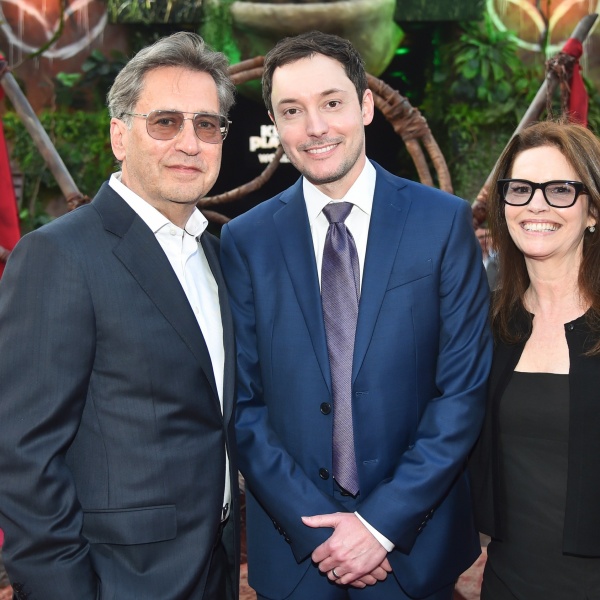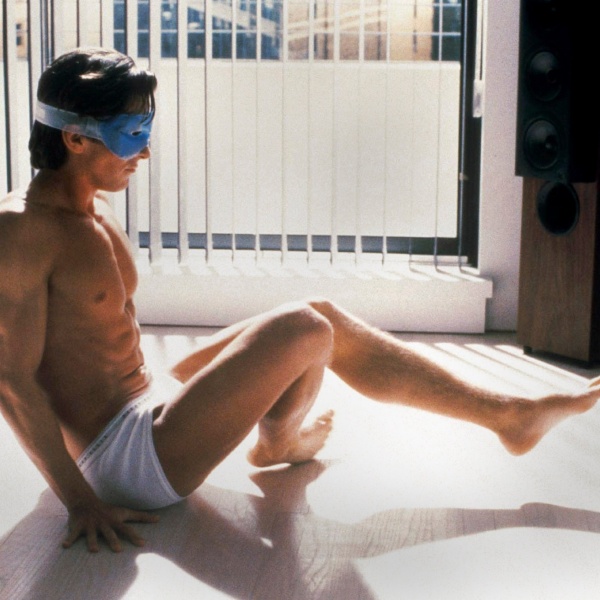The 2023 domestic box office met analyst expectations with about $9.1 billion, up from $7.5 billion — a win given the unforeseen impact of the SAG and WGA strikes. However, that was supposed to set the stage for $11 billion in 2024 and a return to a so-called normal and we now know that won’t happen. For 2024, estimates are around $8 billion.
Welcome to the new normal, which is no normal at all. From blockbuster franchises to business models, Hollywood no longer has a reliable template to produce and release theatrical hits. It spent decades being sure that audiences loved superheroes, franchises printed money, and Pixar was unbeatable. Today, each studio must face the awkward reality that history can’t guide future results.
We looked at the top players and ranked by market share. In 2023 that’s an incomplete statistic given the unknown of VOD revenue, but we know post-theatrical success ties to heightened theatrical interest. More interesting than the studio rankings are the strategies that achieved them — and what that means for the year ahead.
1. Universal — $4.908 billion worldwide, $1.936 billion domestic
Strategy: Emphasize films budgeted under $100 million, often much lower. Deemphasize Peacock, licensing top titles to Netflix. Get beyond NBC Universal CEO Jeff Shell’s abrupt resignation.
Result: The studio took Shell in stride. Credit goes to his former team led by studio chairman Donna Langley — and, to Shell’s 2020 decision to reduce theatrical windows with most films seeing home availability after three weekends.
The aggressive VOD strategy made films easier to greenlight and Universal had 24 films — the most of any studio. The animated “The Super Mario Brothers” began the year’s shift toward fresh takes on familiar stories with $1.362 billion worldwide. “Oppenheimer” reached $952 million worldwide, far exceeding expectations.
Also impressive: The $20 million production “Five Nights at Freddy’s” opened day and date on Peacock and grossed $290 million worldwide. Universal’s lower-budget genre releases approached $500 million in domestic gross.
It also avoided most high-budget losses. The exception is “Fast X,” budgeted at $340 million before marketing and the most expensive film from any studio. Driven by foreign interest, it grossed $714 million worldwide.
Like other studios, Universal increased its licensing to Netflix this year. By shifting titles after their Peacock runs, it’s not treating the homegrown streamer as a destination for feature films in favor of short-term revenue.
2. Disney — $4.827 billion worldwide, $1.903 billion domestic
Strategy: Go all in with franchises and sequels, with seven that cost $200 million or more. Radically shift windows on most films to 60 days or more (the longest of any studio), ahead of later exclusive Disney + or Hulu play. Test interest in originals with a few films, mostly from 20th Century.
Result: Technically it’s #2, but this was a disastrous year for Disney with its huge investment in supposedly surefire films. Theaters needed them (the studio had four of the top eight domestic grossers, including 2022’s “Avatar: The Way of Water”), but Disney didn’t reap the benefits.
“Guardians of the Galaxy Vol. 3” seems certain to have a healthy profit, but the disappointments included animation (“Wish” being the worst), originals (“The Haunted Mansion), and retreads (“Indiana Jones and the Dial of Destiny”).
Disney lost the box office crown for the first time in nine years by a narrow margin, but its issues run much deeper. After years of thriving with franchises and sequels, the audience’s shift hurt Disney the most.
Two of the three Marvel titles last year will lose money; so will “Indiana Jones and the Dial of Destiny.” It’s possible that “A Little Mermaid” could eke out a profit; it cost $240 million before marketing and grossed $570 million.
Perhaps the studio’s films (which include the Fox titles and Searchlight) also provide significant benefit in their exclusivity on Disney+ and Hulu? But it’s not enough.
3. Warner Bros. — $3.84 billion worldwide, $1.43 billion domestic
Strategy: Hope for the best with four DC Comic films (combined cost: $540 million), cross fingers that $100 million+ gambles on “Barbie” and “Wonka” work, deemphasize Max. Try a variety of PVOD windows, as little as after three weekends, most by the fifth week. License top films to Netflix. Take great care of “Dune: Part Two.”
Result: Unlike Disney, it found success with non-franchise titles to balance big-budget stumbles. “Barbie” became the year’s biggest release with $1.44 billion worldwide and at about $135 million cost it’s the least-expensive domestic #1 since at least 2000 (unadjusted) or “Ghost” (adjusted) in 1990. Neither franchise nor FX driven, Greta Gerwig’s film was not only biggest hit, but along with “Oppenheimer,” the most hopeful. “Wonka” will also be profitable.
The studio’s problem is the expensive films of DC Comics. Its four titles this year cost $540 million for perhaps $850 million in worldwide gross. Not good. Currently, “Aquaman and the Lost Kingdom” will fall short of $400 million worldwide.
Warners maintained early PVOD windows (most films by their fifth week) ahead of Max play. “Barbie” thrived, still on top 10 platform charts after four months. The studio is aggressively licensing major titles to Netflix.
Moving “Dune: Part Two” out of the SAG-strike fall until March now seems brilliant. With Timothée Chalamet coming off of “Wonka” and little competition, it is set up for a significant franchise success.
4. Sony – $2.09 billion worldwide, $1.01 billion domestic
Strategy: Make the second “Spider-Verse” animated film bigger than the original, then nurture a group of sub-$100 million group of films, most non-franchise, against higher-profile titles. Be flexible on PVOD, with Sony having no streamer and a lucrative Pay One deal with Netflix.
Result: Sony’s biggest strength may come from what it doesn’t have: the expensive burden of an in-house streamer. Let other studios calculate that access and the need for product as reasons for greenlighting high-budget titles. Sony instead mostly made films for $100 million or less across a range of genres.
“Across the Spider-Verse” became the third summer blockbuster to greatly exceed expectations. While Disney’s Marvel titles flailed, “Spider-Verse” doubled the 2018 original with $690 million worldwide.
Next best was “The Equalizer 3,” which was released during the SAG strike and hurt by the lack of Denzel Washington promotion. Still, at $170 million worldwide with a $70 million cost, it should be profitable after post-theatrical revenue.
Originals like “No Hard Feelings” cost less, and grossed less, but were credible offerings. It had a fairly long window (53 days) to nurture it in theaters, then saw a decidedly strong PVOD response better than bigger-grossing films. Most Sony titles had windows under five weeks, though it waited 68 days for “Spider-Verse.”
5. Paramount – $2.03 billion worldwide, $842 million domestic
Strategy: Do everything possible to make the year’s Tom Cruise film #1. Hope for the best with an otherwise light release calendar top-heavy with franchise possibilities. Be flexible with windows, and recognize Paramount + is lagging.
Result: Maybe — maybe — “Dead Reckoning” ekes out a profit. But with $568 million worldwide off a $290 million pre-marketing budget, that’s a stretch. At best it will be the #13 domestic grosser, and fourth best among July releases. Unthinkable. Cruise had the bad luck to not only follow a slew of sequels that found a tired audience, but it also ran into the “Barbie” and “Oppenheimer” buzzsaws.
“Transformers: Rise of the Beasts” ($200 million cost, $439 million worldwide) could break even; “Scream 6” ($169 million worldwide, $35 million budget) was fine, improving on the late-Covid era reboot.
Most of its releases spent less than five weeks as thatrical exclusives, although “Mission” had 90 days, long after its theatrical life was over. As the company mulls offers for acquisition, this franchise-heavy studio didn’t have the year for that part of its assets to elevate its value.
6. Lionsgate – $1 billion + worldwide, $580 million domestic
Strategy: A critical year for the company, with several possible successes from their top franchises. Keep budgets down; find sleepers.
Result: Franchise problems? Not here. Led by “John Wick: Chapter 4” followed by a late-year success with “The Hunger Games: The Ballad of Songbirds and Snakes” with “Saw X” in between, the company’s revenues worldwide passed $1 billion for the first time in five years.
“Jesus Revolution” and “Plane” were lower-cost movies that will make money. “The Expendables 4” flopped, but that was a straight distribution deal. “Are You There, God? It’s Me, Margaret” was a disappointment, but added prestige. Windows included a number of three-weekend turnarounds, with 60 days for “Wick.”
For the first time in five years, the company’s revenues worldwide passed $1 billion. Is that enough to sustain a major studio? At a minimum, it sustains Lionsgate as a viable partner for acquisition. Like Sony, it doesn’t have a streamer to support and increasingly licenses to Netflix.





